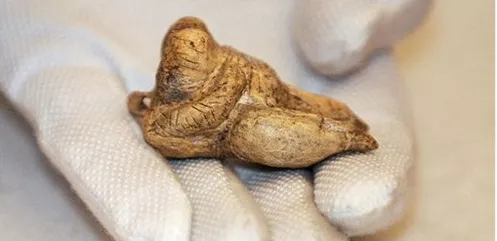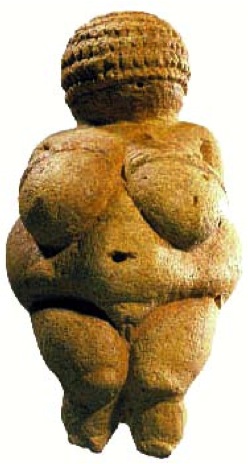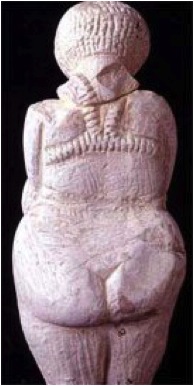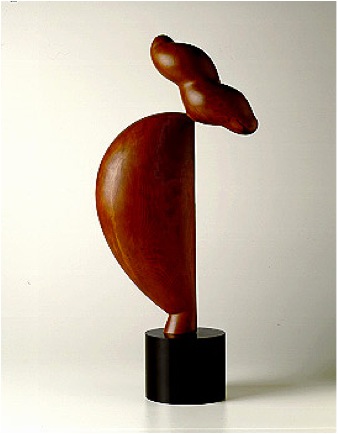
Venus: The Urge to Fashion the Female Form

I am sure many of you recognize this popular icon — the Venus of Willendorf. She is one of the oldest sculptures in existence — over 22,000 years old — and you can find her image on T-shirts, pendants, coffee mugs, chocolate and soap.

So far, some 200 hundred Venus figures have been found from Spain to Russia. These statuettes were made starting over 35,000 years ago. They were created for different reasons, but the urge to fashion the female form out of whatever stone, bone, or ivory available has been an enduring one.
Found in Germany in 1908, the Venus of Willendorf was considered one of the oldest examples of figurative art — until the discovery of the Venus of Hohle Fels.
The Venus of Hohle Fels

Close-up of the Venus of Hohle Fels

Not only is she believed to be the world's oldest sculpture of any human form ever found — somewhere between 35,000-40,000 years-old — she is also one of the most sexually explicit. Just over two inches tall and carved from the tusk of a wooly mammoth, it appears she was most likely worn as a pendant. In place of a head, the statue has a polished ring — suggesting that the carving was likely hung from a string around someone’s neck.
There has certainly been a long history of debate over the meaning of Paleolithic Venuses — and with the discovery of this most recent figure — scholars are coming around to the fact that their clear sexual attributes suggest expressions of fertility. What we most focus on are her enormous breasts and her clearly delineated vulva.

I am fascinated by how the news media deals with these sorts of depictions of ancient sexuality. When this latest Venus was discovered, phrases like “prehistoric porn,” “sex toy” or “buxom babe” abounded. One headline screamed: “Oldest Known Sculpture Is Busty Clue to Brain Boom.”
Now what does that reveal about our cultural comfort index about female sexuality — even ancient female sexuality?
The Venus of Lespugue

The Venus of Lespugue, found in France in 1922. is some 25,000 years old and another example of a figure that raises a lot of questions. Is the swollen body with its egg-shaped parts an exaggerated celebration of fertility? Is she a portable amulet of power, a portrayal of a priestess? Is she a depiction of how men viewed women and if so, is this a culturally idealized view of female beauty? Certainly given the Ice Age climate, fat would have been critical to survival.
There is something else going on that we can see in this more cleaned up version of the Venus of Lespugue (who was damaged during excavation). She appears to be wearing some sort of skirt — representing perhaps one of the earliest examples of spun thread.
Since most of these figures are faceless, one might also wonder whether this facelessness is a conscious desire not to represent individuality — due perhaps to their intended sacredness.
The Venus of Sireil

And who might have made these figures — men or women? Some experts believe Venus figurines were made by men — while others, like Jill Cook, curator of Paleolithic Art at the British Museum, thinks these figures were most likely made by women for each other.
Kostenki Venus


Cook points out that no two figures are the same. Some are adorned with bracelets, necklaces, hats, belts, and aprons and are thus symbolic of self- representation. She suggests that they were perhaps objects handed down from mother to daughter.
I think what I most appreciate about these ancient Venus figures is that they appear so amazingly contemporary. Twentieth century artists were very much influenced by their shapes. You can see it in the sculptures of Jean Arp, Constantin Brancusi and Henry Moore.
Jean Arp

Henry Moore

Constantine Brancusi

